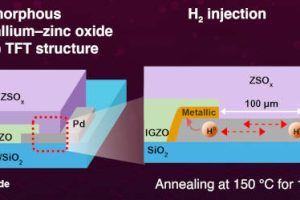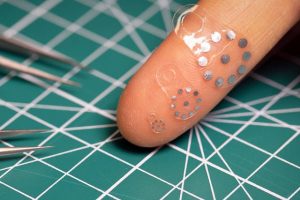
Aqueous zinc-iron batteries are one suggestion, where storage is though the reversible plating and stripping of zinc at the anode.
One of the problems associated with this chemistry (dendrite growth is another) is hydrogen gas generation from parasitic side-reactions that decompose water – which gradually pressurise the cell with an explosive gas, and deplete the electrolyte.
“Researchers have often tried to evade this issue by installing a surface protection layer that minimises the contact area between the metal anode and the electrolyte, according to the Korea Institute of Science and Technology (KIST, pictured). “However, the corrosion of the metal anode and accompanying decomposition of water in the electrolyte is inevitable in most cases.”
KIST scientists have demonstrated an alternative solution, creating a catalyst that automatically turns the hydrogen back to water inside the cell.
It is made from manganese dioxide and palladium.
“Manganese dioxide does not react with hydrogen gas under normal circumstances, but when a small amount of palladium is added, hydrogen is readily absorbed by the catalysts, being regenerated into water,” according to the research institute. “In the prototype cell loaded with the catalysts, the internal pressure was maintained well below the safety limit, and no electrolyte depletion was observed.”
The team is under no illusions: palladium is an expensive material, even though only 0.2% of it is needed. However, they pointed out, now that the concept has been proved, the search can start for a less costly alternative.
Also, this catalyst is not limited to batteries. “It can be applied to various industrial facilities where hydrogen gas leakage is one of major safety concerns – at, for instance, hydrogen gas stations and nuclear power plants,” said KIST researcher Professor Si Hyoung Oh.
THe work is published as ‘Highly safe aqueous rechargeable batteries via electrolyte regeneration using Pd–MnO2 catalytic cycle‘ in Energy Storage Materials.
 Electronics Weekly Electronics Design & Components Tech News
Electronics Weekly Electronics Design & Components Tech News



I’m curious how much palladium would be used per megawatt
Do not be worried about the Palladium price. It will come down much further over the next two years. The Pd market is in a structural deficit, and continued auto catalyst recycle returns with increased new Pd centric PGM Mining. This coupled with a decline in ICE demand from a source responsible for over 85% of its demand, auto catalysts.
People like Norilsk have offered prime money for contests on what will be the next big Pd demand source.
See IPMI for more details.